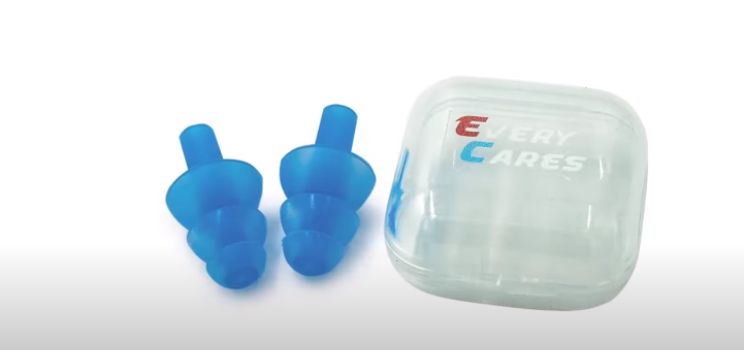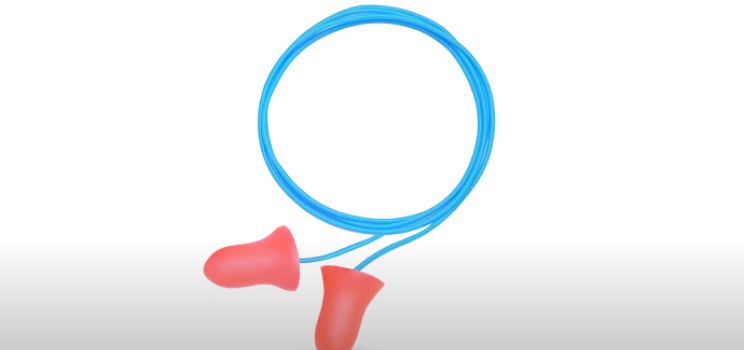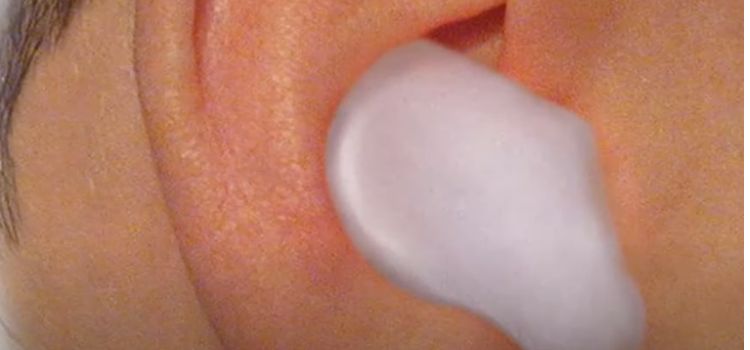As an Amazon Associate I earn from qualifying purchases.
People of all ages love swimming as a popular and pleasant hobby. While swimming can be a fun and relaxing activity, there are several dangers, one of which is the water can get into your ears. In this situation the moldable earplugs for swimming are useful.
Here we will talk about the necessity of the moldable ear plugs for swimmers, how it works, how you can use it to grave the maximum benefit from it, and the types of moldable ear plugs. Also we will talk about it that how you will get a quality full moldable ear plug as per your requirements.
Why Are Moldable Ear Plugs Necessary for Swimming?

It’s critical to comprehend the purpose of moldable earplugs before delving into their specifics. Earwax, a natural defense system in our ears, helps keep water from getting to the sensitive areas of the ear. Even with this defense, water can still enter the ear canal, which can result in a number of problems.
Swimmer’s Ear: A painful infection of the ear canal, swimmer’s ear is also referred to as otitis external. It is typically brought on by water becoming trapped in the ear, which provides a wet environment ideal for the growth of germs. Itching, redness, and soreness are among the symptoms. The risk of swimmer’s ear is reduced by the physical barrier that moldable ear plugs create to keep water out of the ear.
Hearing Protection: Using water in your ears might damage your hearing in addition to causing infections. It may produce the impression that noises are muted and, in rare circumstances, cause transient hearing loss. Moldable ear plugs help protect the integrity of your hearing by keeping them out of water.
Preventing Ear Injuries: Water in the ear can sometimes lead to eardrum rupture, infection, and hearing problems, in addition to ear injuries. Moldable earplugs act as cushions and protect the ears from physical damage, especially when diving or other activities are at risk of water pressure.
Comfort and Focus: Diving should be a relaxing and absorbing experience. It can be difficult to fully concentrate on your swimming technique or enjoy your time in the pool if you have constant water in your ears. You can stay comfortable and focused with the aid of moldable earplugs.
How Do Moldable Ear Plugs Work?
Swimming earplugs that form to the contours of the ear canal to offer a waterproof barrier. Usually, they are constructed from a pliable, supple substance that can be shaped to fit your ear precisely using silicone or wax. Moldable Ear Plugs for Swimming operate like this:
Tailored Fit: Moldable earplugs should first be shaped to fit the contours of your ears. To accomplish this, slightly soften the material—often by kneading it in your hands—and then delicately place it within your ear canal. It conforms to the shape of your ear as it cools and hardens, giving it a personalized fit.
Water Sealing: The earplugs effectively seal the ear canal once they are in place, keeping water out. The snug fit guarantees that the plugs stay in place even when you dive and move your head quickly. Even when diving or moving the head quickly, the plugs stay in place thanks to their firm fit.
Reduced Noise: Moldable earplugs also reduce noise to some extent. Although their main purpose is to keep water out, they can also somewhat reduce noise, which can help you swim more calmly and deliberately.
Comfortable Design: Moldable ear plugs are made of a malleable material that is easy to use and doesn’t put strain on the ear canal. They are therefore appropriate for extended swimming workouts.
Types of Moldable Ear Plugs for Swimming

Moldable earplugs come in a variety of forms that are specially made for swimming. Because each variety has special qualities and benefits of its own, swimmers can select the one that best meets their requirements.
Silicone Ear Plugs: Swimming enthusiasts frequently opt for silicone earplugs. They form a tight seal in the ear canal and are simple to mold. If properly maintained, they are long-lasting, reusable, and resilient.
Wax Ear Plugs: These are yet another popular choice. To create a flexible and cozy seal, they are usually composed of a blend of cotton and wax. Earplugs made of wax are disposable, and usually meant to be used just once.
Foam Ear Plugs: Although not as moldable as silicone or wax, foam earplugs are perfect for swimming. They provide a strong water barrier and are easy to stretch to fit the ear canal.
Custom Molded Ear Plugs: They are a great choice for those who swim frequently and need a high level of comfort and performance. Your ear imprint is used to create a custom made ear plug for these. Although they are generally more expensive, they provide better comfort and water resistance. Despite typically costing more, they provide better comfort and water resistance.
String-Connected Earplugs: A string or cord can be used to attach certain moldable earplugs. By making it simple to take the earplugs out after swimming, this design helps to keep them from losing their place.
Choosing the Right Moldable Ear Plugs for You
Moldable earplugs can be an invaluable tool for both hearing protection and restful sleep. These adaptable earplugs are made to fit your ear precisely, isolating undesirable sounds while maintaining a tailored fit. Nonetheless, with so many variations accessible, it’s critical to select the best moldable earplugs for your unique requirements.
Material:
Silicone, foam, or wax is frequently used to make moldable earplugs. When you choose material, consider both its intended purpose and your comfort. While silicone and wax earplugs offer greater comfort when worn for longer periods of time, foam earplugs still significantly reduce noise.
Rating for Noise Reduction (NRR):
Earplugs’ ability to block out noise is gauged by their Noise Reduction Rating (NRR). They are more effective at blocking out sound the greater the NRR. Regardless of whether you’re at a noisy construction site or with a snoring partner, pick earplugs with an NRR that fits your surroundings.
Hygiene:
Moldable earplugs can be reused or thrown away. Think about your hygiene preferences and the frequency of use. In the long run, reusable plugs may be less expensive, but they need to be cleaned more frequently.
Shape and Size:
Make sure the earplugs you select are fit properly for your ears. But unfortunately if you won’t be aware about it before then you don’t need to be worried about the moldable ear plug because you can cut or roll moldable earplugs to fit the exact size and shape of your ears.
Intended Use:
Select an earplug made for the particular use you requires it for, such as sleeping, swimming, or industrial job. While sleeping earplugs are designed with comfort in mind for prolonged use, swimming earplugs are usually waterproof.
Simplicity of Use:
While some moldable earplugs can be rapidly formed, others need to be kneaded or rolled before insertion. While choosing, take your dexterity and convenience into account.
You may choose the best moldable earplugs for your needs by taking these factors into account, which will guarantee both comfort and efficient noise suppression. The correct earplugs can significantly improve your everyday life, regardless of whether you work in a noisy workplace or are a light sleeper.
Using Moldable Ear Plugs Effectively

If you want to use the Moldable Ear Plugs for Swimming effectively then you can follow the below points:
Select the Right Ear Plugs:
It’s important to choose the proper earplugs for swimming because not all of them are made equal. To protect your ears during water activities, look for moldable earplugs. A hypoallergenic, waterproof material that is cozy to wear for extended periods of time should be used to make them.
Clean Ears Before Use:
It is important to make sure your ears are dry and clean before using moldable earplugs. Moisture and excessive earwax might compromise the comfort and seal of the plugs.
Mold Them Correctly:
Gently slide the earplug into your ear canal after rolling it into a cylinder. Gently shape it into a tight fit. Refrain from inserting the plug too far into the ear as this may cause discomfort and harm the ear canal.
Preserve a Watertight Seal:
Moldable earplugs’ capacity to produce a watertight seal is one of its main advantages. Look for any seepage or holes. If water starts to seep in, take the plugs out and re-mold them until they fit snugly.
Test in a Dry Environment:
Check the earplugs in a dry place before using them in the pool. This guarantees that they are cozy and well-sealed. Make the necessary adjustments if they feel loose or unpleasant.
Fit and Comfort:
Give comfort priority. Snug-fitting moldable earplugs shouldn’t hurt or create discomfort. If you feel pressure, pain, or itching, take out the plugs and reposition them.
After using rinse:
Rinse the earplugs with fresh water after swimming to get rid of any impurities like salt or chlorine. After letting them air dry, put them in their case for storage.
Replace When Necessary:
The life of moldable earplugs is limited. They may become less flexible and efficient with time. When you see wear indicators like tears or cracks, it’s time to replace them.
Follow Manufacturer Instructions:
Pay close attention to the instructions provided by the manufacturer of the particular earplugs you are using. Their care and usage requirements could be different.
Effective moldable earplug use for swimming requires careful earplug selection, fitting, and upkeep. These instructions will help you achieve a comfortable and tight seal, protecting your ears from water-related problems and making swimming more pleasurable.
Conclusion
For those who want to spend time in the water, moldable swimming earplugs are a need. They protect against physical injuries, hearing impairment, and swimmer’s ear in addition to improving comfort and concentration when swimming. As there have available size, shape, styles and materials for moldable ear plug so you may discover the ideal moldable earplugs to meet your unique requirements and tastes.
If you want then you can take some time to choose the best earplugs for your requirements, learn how to use them properly, and have a stress-free, enjoyable swim before you go swimming again. Making ear protection a top priority can help you keep your passion for swimming a fun and safe past time.
Amazon and the Amazon logo are trademarks of Amazon.com, Inc, or its affiliates.
Leave a Reply